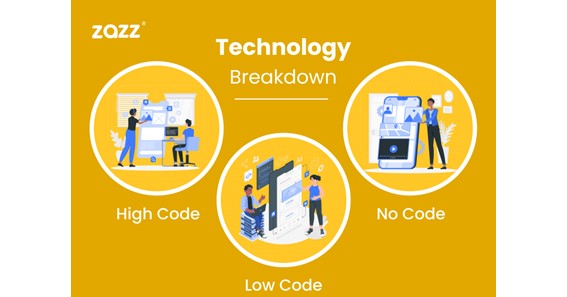Living in a world where digital is dominating every sphere is an avenue of opportunities. Trying to develop an application needs an extensive amount of research. In the older days, the development of any application like android app development solutions heavily relied on the hands of the developer. Such is not a requirement anymore. There are many levels of stakeholders now involved in the process.
For modern-day development of applications, the developer needs to pay heed to various facets. The impact of modern applications is faced by multiple shareholders including users, marketeers, customer teams, and so on. The multi-specialty involvement leads to the inclusion of multi-tier teams and systems.
This is the leading reason why developments and innovations are happening on the digital platform at a rapid speed. Adopting the correct assembly model is essential for the success of any project. Keeping the best case practices in mind, the new age applications should try to ignore the trap of the monolith.
While you’re hiring android app development services, it is advised to utilize design concepts that are component-derived. Depending on the variation of coupling and cohesion, components and services can be built upon using a plethora of applications.
Click here – How to Write a Compelling Blog
The assembly models can be further categorized into:
- High code
- Low code
- No code
Depending on the requirement of any business, a combination of these assembly models can be created to make it a success. Every assembly model has its advantages and strength. The intent of all of the featured codes is to produce software. Picking the correct assembly model as per its strength and the requirement of the business is a crucial task.
Read on to know more about the distinction between High Code vs Low Code vs No Code!
What is the difference between High Code vs Low Code vs No Code?
With the changing times, the needs of business, and its development have changed. Digital innovation has encouraged people to self-learn and not rely on others for application building. Gone are the days when businesses relied on developers. Due to the constant evolution in the field, more intuitive methods and tools have paved the way for easier execution and shaping the excellent customer experience.
High Code
It is the traditional method of coding. High code requires a manual deployment of code which means that there is a developer requirement here. This kind of code is created with complete ownership of a particular business. As a result, this process ends up being on an expensive scale for a business.
For any application that solely depends on the user experience heavily, high code is a boon for them. It is a perfect code for Android app development services that develop applications solely for user delight.
React native app development services or developers along with Angular developers rely often on particular frameworks of Java. The content and data can be provided via many API-based services or headless CMS. While the content and data can be uploaded and updated from any remote location, the jobs rely on a developer who controls the whole experience and the interface of the application. However, this leads to interference with other developmental and innovation-led tasks on their plates.
Click here – 8 Ways You Can Improve the Quality of Special Education
Low Code
To create flexible applications, low code is deployed. These are automated assembly models. Developers focus on creating a composable platform that provides tools and services that require no or little coding. This gives the businesses and owners all the control over the experience. This can also be used to create other applications utilizing the powerful components assembly.
The main objective of using low code for the development of applications is its collaborative nature and speed. Low code caters to the other stakeholders involved in the process like the owners and marketers. Developers work on the components which can later be picked up by marketers to curate an exceptional user experience. Giving ownership to marketers proves to be beneficial because they can translate insights into the experience.
No Code
No code allows marketers to gain control after deployment as it requires developer intervention. To manage the entire experience, business users and marketers rely on the configuration, simple input tools, and forms to work out the experience. Since this kind of code deployment does not require the interference of manual coding, the professionals get a chance to innovate and develop new technologies.
No code works perfectly for uploading assets or content on the page. It also helps resolve individual department crises well. They are of huge help for scaling solutions by using a one-size-fits-all outlook.
How to Choose the Right Technology?
Sometimes, developers like to mix and match technologies to create an unforgettable experience for the users. A better understanding of the distinction in the assembly can help businesses find solutions to their needs efficiently. At Zazz, we always resonate with your requirements to come up with the right amalgamation of technology solutions. This approach to bespoke services makes us a renowned application and software solutions agency in the USA.

